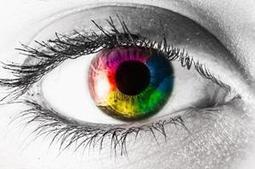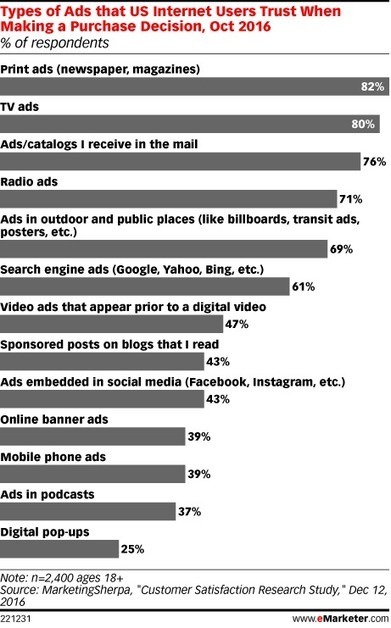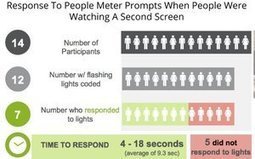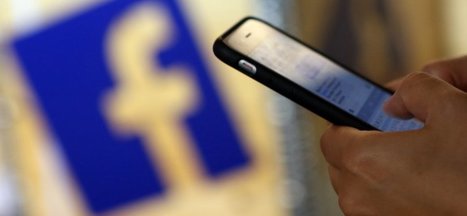 Your new post is loading...
 Your new post is loading...
So let’s do the math. Ten years is 3,650 days. Multiply that by 5,000 ads per day, and you get an unbelievable number: 18,250,000. My jaw dropped when I realized that. I’ve seen over 18 million ads in the last decade. In all that time, I’ve learned a lot, especially about conversions.And that’s what I want to talk about today. I’m going to distil everything I’ve learned from those 18 million ads and break it down into bite-sized, actionable tips for you. To make things as relevant as possible, I’m going to address display ads specifically. Display ads are among the most popular and widely used digital advertising methods today....
Let's start with a story. To analyze the effectiveness of its TV commercial storyboard, Makro, an international digital and in-store retailer, asked neuroscience research firm Neurensics to conduct an f-MRI study to determine people's reactions. The experiments showed that the storyboard scored lower than average in effectiveness: "It activated more negative than positive emotions. In particular, the storyboard did not activate decent levels of trust and expectation. The overall result was a negative score on influencing buying behavior." The experts' advice to Makro was to eliminate the scenes that provoked anger and rejection, to mention the company's end-value, resolve some elements of the plot, and add music with a climax. The TV commercial based on the optimized storyboard provoked more positive feelings in the audience, according to the Neuromarketing Science and Business Association (NMSBA). The result of Makro's trusting in neuroscience to enhance its advertising activities was a 12% increase in sales compared with the same period in the previous year....
Some people claim print is dying. As a journalist, I don’t really like these people, even if they may be right. So it was comforting to find out that consumers still value print, at least when it comes to one crucial metric.
According to an October 2016 survey by MarketingSherpa, 82 percent of U.S. internet users trust print ads when making a purchase decision, more than any other medium. The highest ranking online format, search ads, clocks in at 61 percent, while only 25 percent of Americans trust pop-ups....
The study -- which is part of an ongoing series of research commissioned by the Council for Research Excellence to understand the nature of watching TV in the current viewing environment -- was conducted by Nielsen Consumer Neuro, which utilizes a variety of biometric measurement techniques to understand people’s conscious and unconscious interaction with media. The findings of the study, dubbed “The Mind of the Viewer,” were described as preliminary, especially the part testing response to people-meter prompts, but it suggested that the kinds of media distractions impacting the way people consume media may also be impacting the way the industry measures how people consume media. “We live in the age of distraction,” Carl Marci, chief neuroscientist at Nielsen, remarked, adding: “People make interesting choices with technology.” When it comes to interacting with people meters -- the technology that is the basis for producing national TV’s advertising currency, Nielsen national TV ratings -- 25% of Nielsen people-meter panelists participating in the study did not respond to their prompts because they were looking at a second screen when the meter prompted them with a light....
According to a Nielsen Catalina Solutions (NCS) study, magazines deliver the highest return on advertising spend (ROAS), with an average return of $3.94 for every dollar spent on advertising.
The study, which was presented today at the Advertising Research Foundation Audience Measurement 2016 conference, revealed the next closest media platform is display advertising with a ROAS of $2.63.
“Over the past year, there has been a preponderance of evidence to prove the effectiveness of print advertising and the power of magazine media to both tell and sell,” stated Linda Thomas Brooks, president and chief executive officers of MPA – The Association of Magazine Media....
|
The tide began turning against the duopoly late last year when the fake news epidemic illustrated for many the lack of brand safety on Facebook and Google. Brands found out that their ads were showing up next to hate speech or agenda-driven fake news and were understandably miffed.
Fueling that anger, Facebook was caught drastically inflating its time-spent metrics for video by as much as 60-80%. More recently, Google was caught doing something similar with AMP, its mobile-based publishing platform.
Though both have subsequently agreed to third-party analyses of their operations, for many marketers, that was cold comfort since (in Facebook’s case, at least), the abuses had been happening over a long period of time.
In late January, the industry found a spokesman for their discontent with Marc Pritchard, Procter & Gamble’s global CMO, who chastised the industry for its lack of transparency. More recently, Havas pulled its buys on Google and YouTube for UK-based clients in the name of brand safety. ...
In January 2017, Small Business Trends released the results of a survey of over twenty-six-hundred small business owners, revealing that sixty-two percent of them believe Facebook ads are ineffective. With complaints of little-to-no ROI, these entrepreneurs say they will not use Facebook advertising again. Some experts, however, challenge this viewpoint, saying that properly targeted Facebook ads do indeed, provide results. "When businesses don't see the results they hope for, it's usually because they haven't done enough testing on their ad copy, visuals, and the ideal combination of information to target the right audience," says Vitruvian Digital Advertising Founder, Kristie McDonald. Jeanine Blackwell, Founder of The Launch Lab agrees, saying that marketers aren't asking themselves the right questions to determine an effective target market for their ad campaigns. "The problem is that most advertisers only use the simplest of criteria to let Facebook know who they want to see their ads, such as gender, age, and income," says Blackwell. "When you couple this information with more insights on the behaviors and unique interests of your audience, you can deliver your ads only to people likely to be interested in what you offer." Both experts agree that a testing budget as small as five or ten dollars a day, focusing on different mixes, can tell you what you need to know before you begin to invest larger amounts in your campaign....
Despite upbeat predictions about holiday spending, retailers shouldn’t expect much help from their advertising: The YouGov BrandIndex reports that for almost half of all large retail brands, advertising awareness is significantly lower than it was a year ago. The consumer perception research firm says that while Walmart still leads in awareness, it’s only connecting with 48% of consumers, down nine percentage points compared to last year. Kmart, a division of Sears, and Best Buy experienced even steeper awareness declines, at 12 points and 10 points, respectively. And while Amazon, Target and JCPenney fared the best, each of them also experienced dips in awareness. The index is based on daily polling, asking respondents two questions about 23 leading stores: “Does it give good value for what you pay?" and "Which of the following brands have you seen an advertisement for in the past two weeks?" Amazon came in No. 1 again this year in YouGov’s value perception ranking. What’s more, it’s out in front by miles, with a score of 55.8%. Old Navy runs a distant second, with a score of 33.7%, and Walmart third, at 32.5%. Costco, Best Buy, eBay, Bed, Bath & Beyond, Target, Kohl’s and JCPenney are all also in the top-10 of the value perception group....
What’s the difference between The New York Times, and, say, DNAInfo New York? Maybe about $20. The Times, along with outlets like ESPN, Hearst, Discovery Communications, Gannett, Slate, and ABC, all consider themselves “premium” media. That means they can charge advertisers “premium prices,” as compared to the great mass of news and entertainment sites out there, like a DNAInfo, a site covering local news across New York City’s five boroughs. That $20 or so difference is how much more the Times can charge for access to each thousand of its readers (a cost-per-thousand rate, or CPM) as compared to lesser-branded sites. It’s just an approximation but it holds true across major media: Big branded media companies believe that the “context” they provide and their “quality audiences” justifies higher-than-average rates. Their pitch to advertisers goes like this: We’ve got tons of readers, and they’re smart and affluent. They really trust us. And when they’re on our site, they’re paying attention. In a word, their argument is a single word: effectiveness. With the publication of a new comScore study this morning, they just got more justification for their justifying. Entitled “The Halo Effect: How Advertising on Premium Publishers Drives Higher Ad Effectiveness,” comScore puts a few numbers on that effectiveness.Its key word: lift....
|



 Your new post is loading...
Your new post is loading...
















Neil Patel shares what he learned from a lifetime of ads. Useful insights.